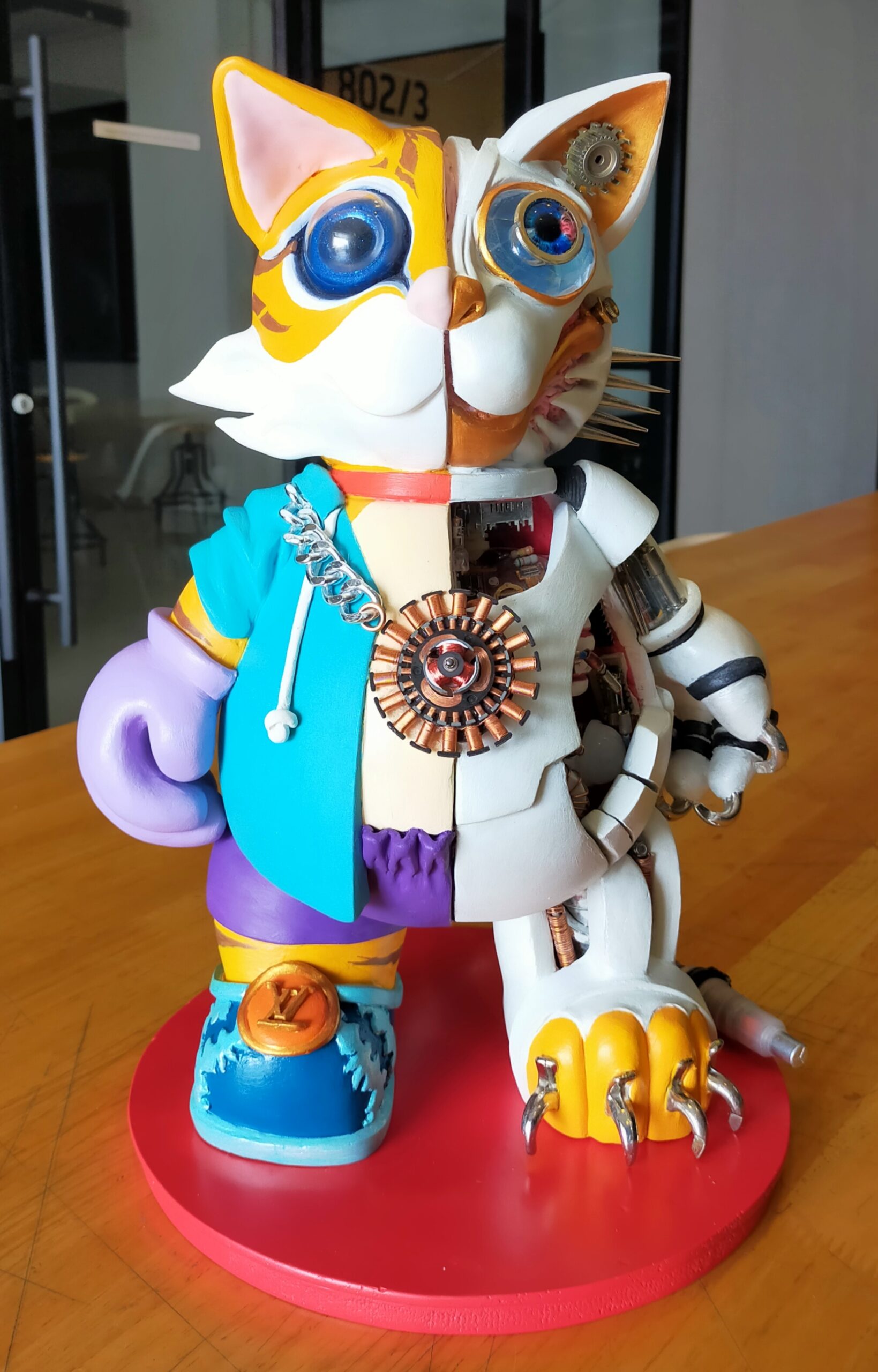
Asst.Prof. Lojana Manodhaya
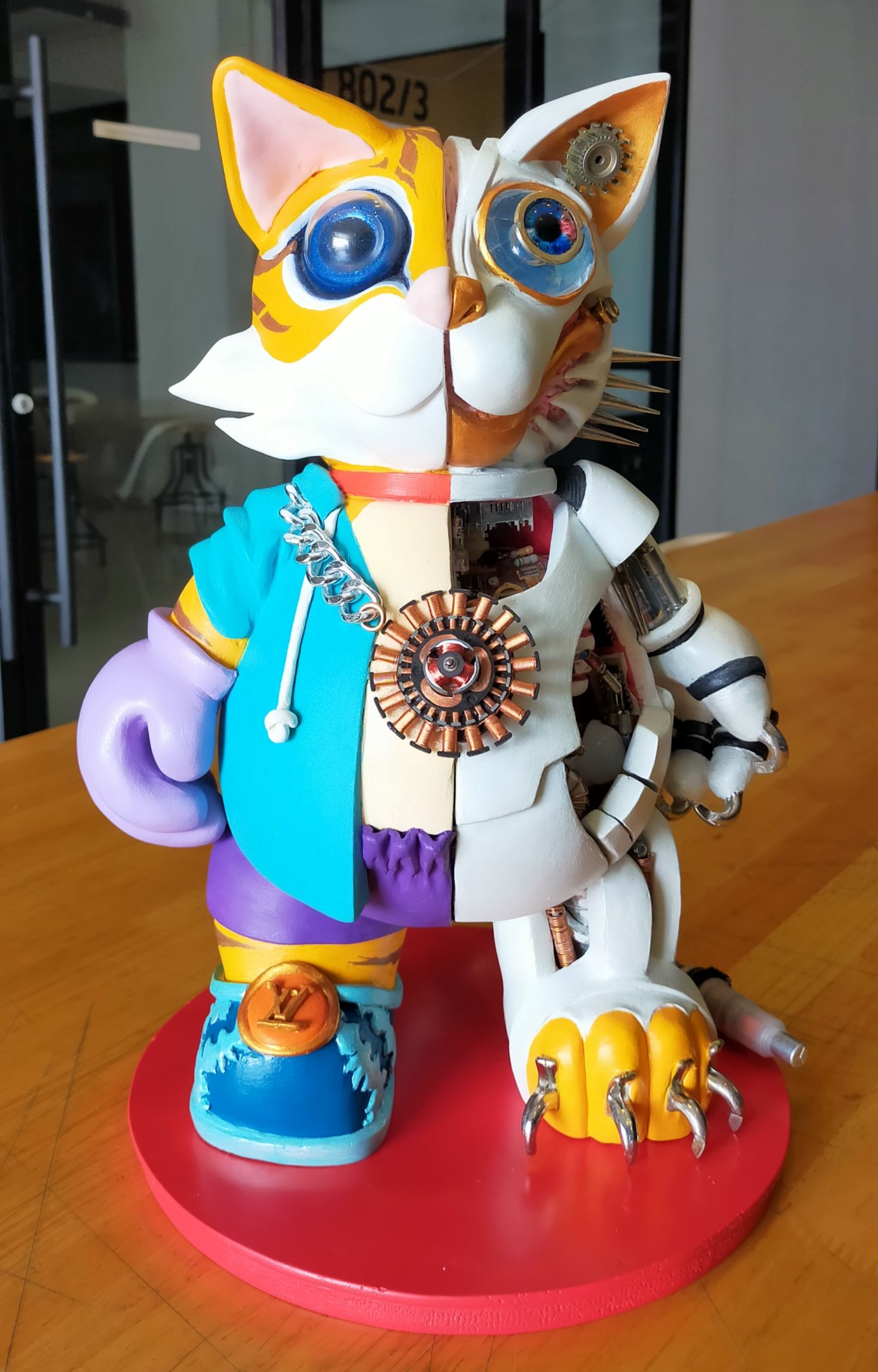
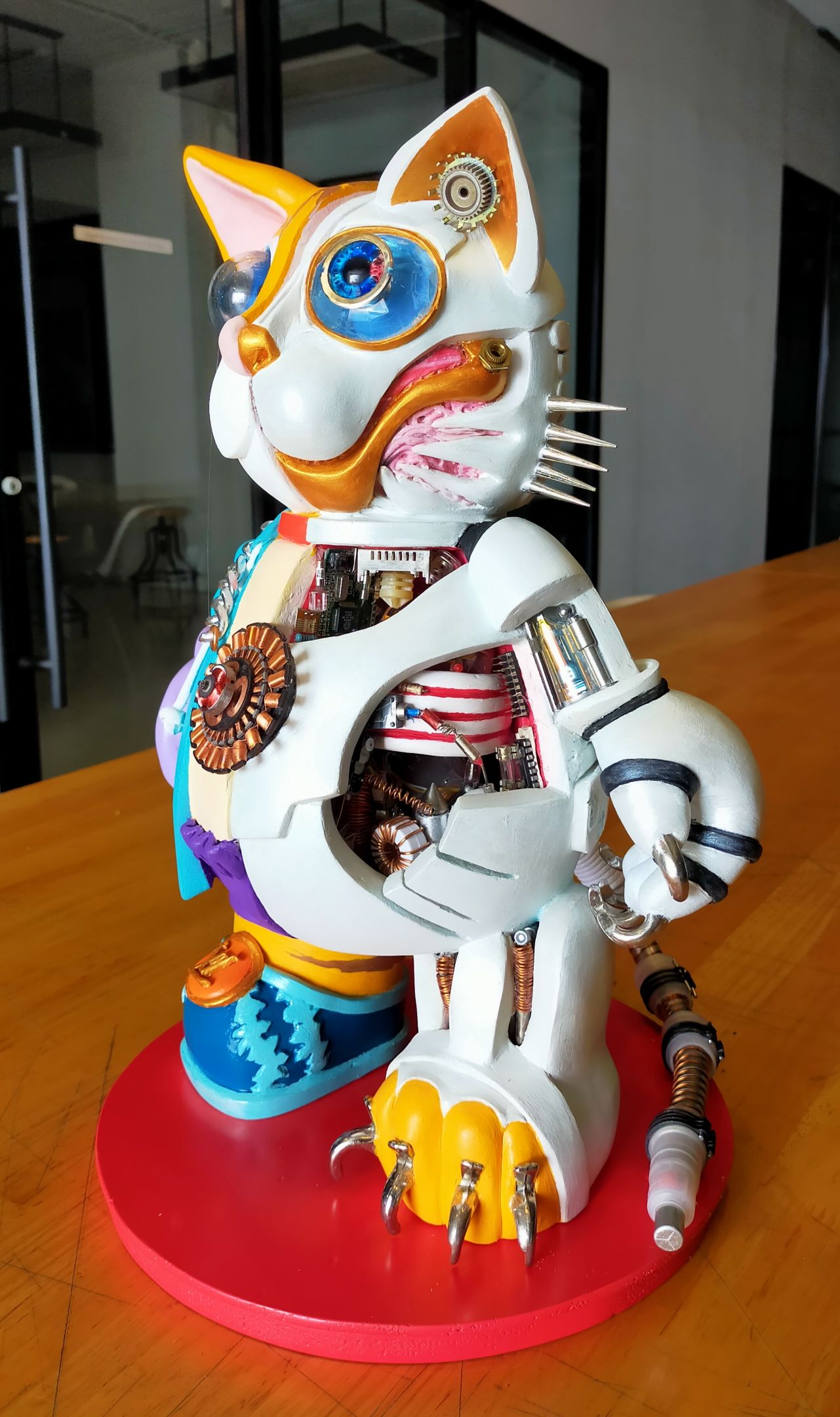
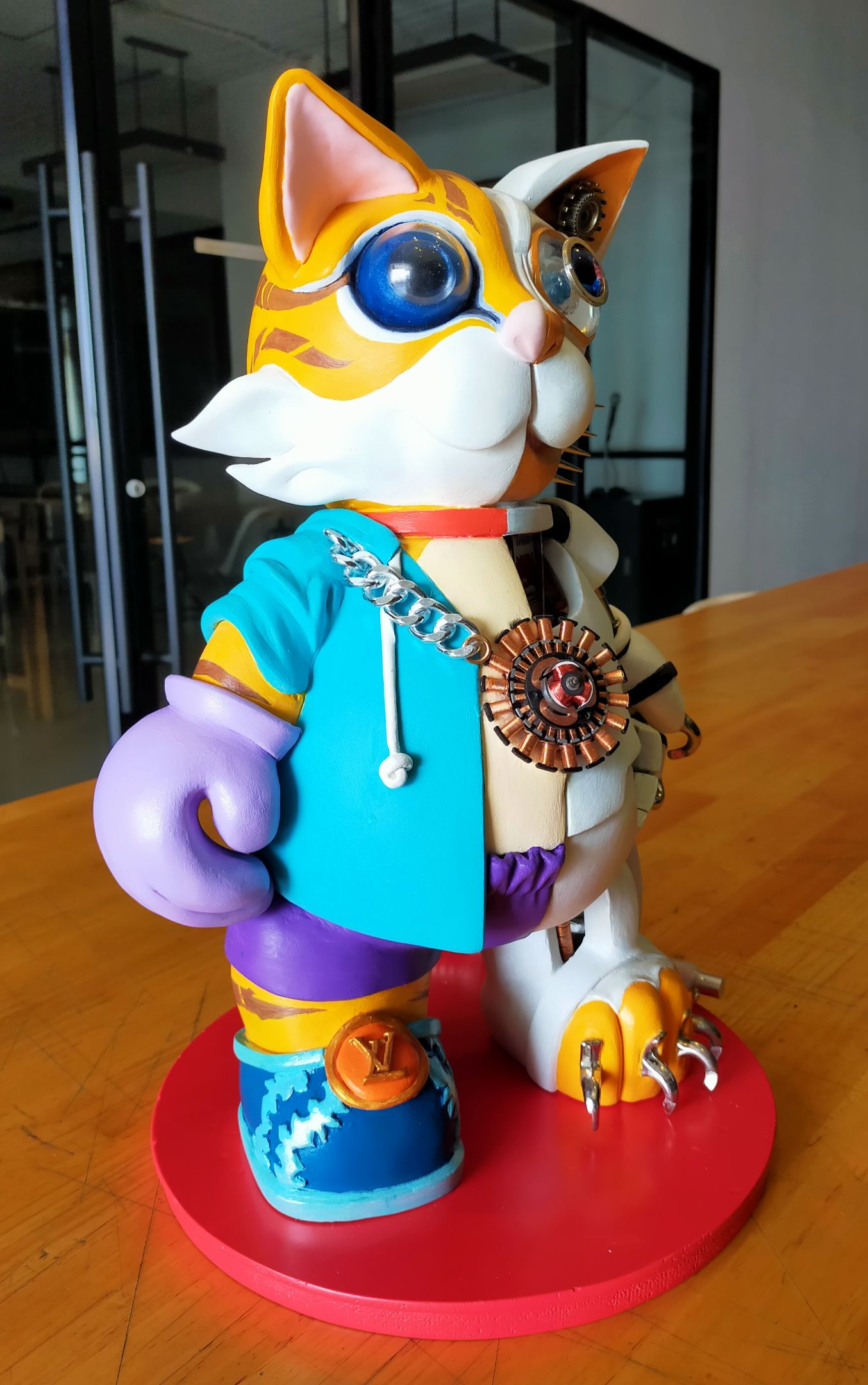
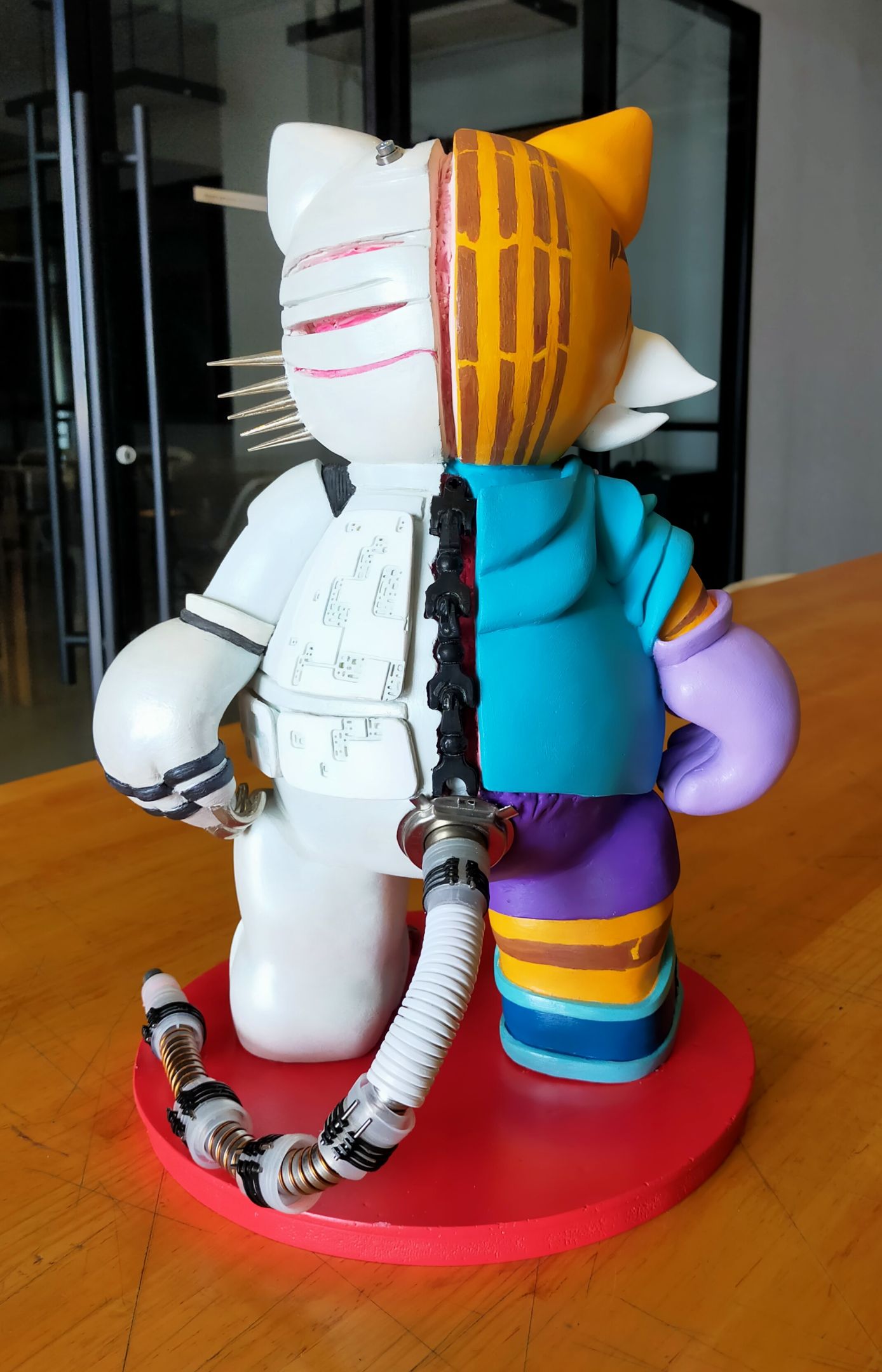
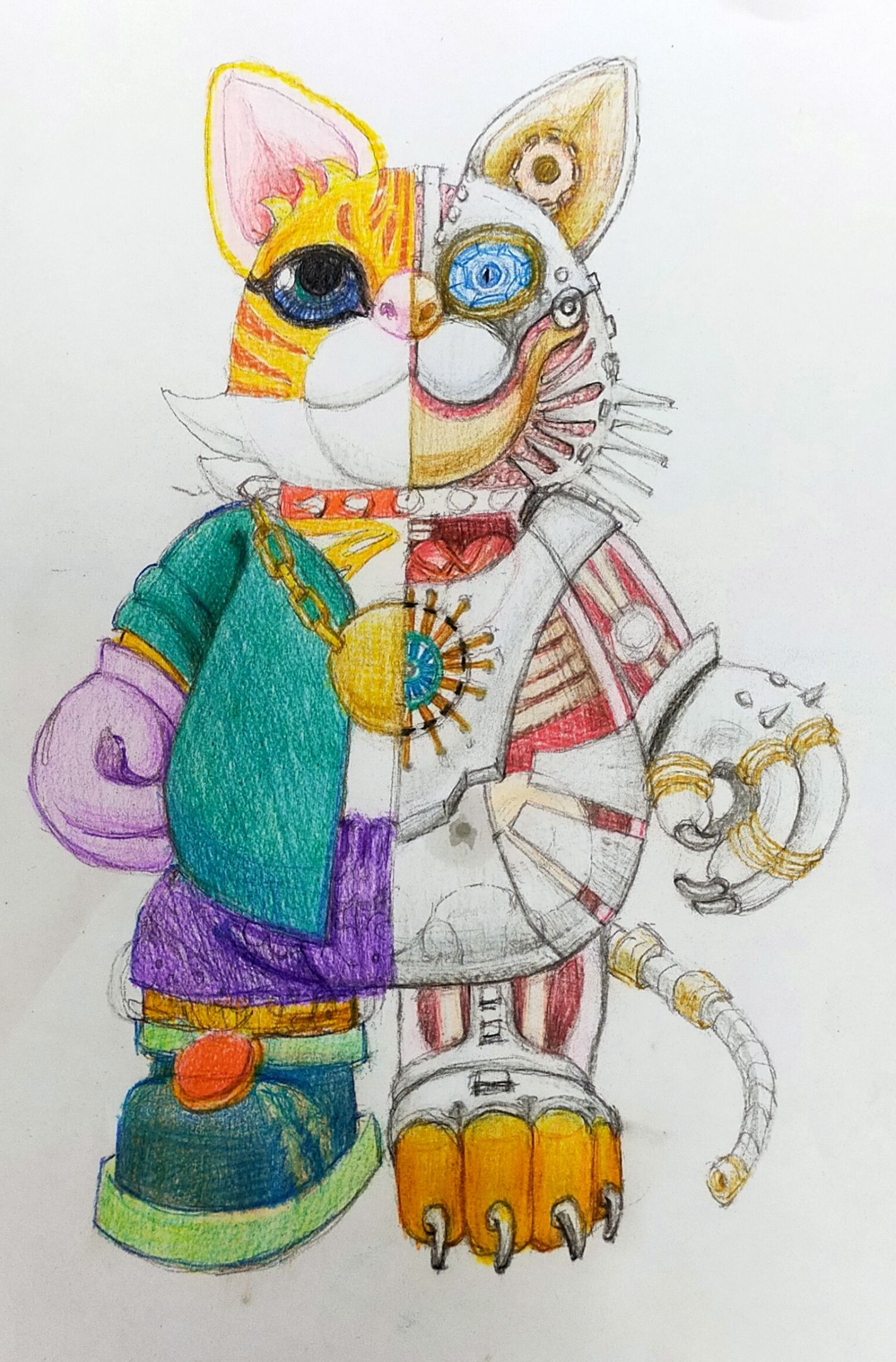
Abstract :
Science has made great progress in creating the technology of the future called ?Bionics? which involves creating replacement organs for living beings, including humans, animals, and even plants that are physically deformed. The idea of creating a ?Bionic Cat? came about, using the concept and shape of beloved pets to create an Art Toy Work that is popular with the public and represents living things in the world. The artwork is divided into two areas, one side showing the appearance of a normal, lively cat, while the other side displays various organs that have been replaced with ?Bionics? organs.
Objectives :
1. To showcase the scientific advancements in creating organs, the concept of “Bionics” is introduced. This involves replacing artificial organs with ones that mimic the functions of natural organs, allowing disabled individuals, plants, or animals to lead normal lives. This idea can be further combined with personal creativity to create unique works of art.
2. To develop creative skills using paper clay and mixed media to create an art toy.
Conceptual Framework :
The artwork was inspired by the advancements in bionic organs, from prosthetics to bionic organs for both humans and animals. The creators were particularly interested in the issue of disabled animals that did not have access to bionic organs. They were inspired by stories such as that of Motala, the elephant from Thailand who lost a leg due to a landmine, a dolphin from a Japanese aquarium who lost part of its tail following surgery, and many other animals such as sea turtles, dogs, and goats that have lost their limbs due to accidents. These stories were the inspiration behind the creation of “Bionic Cat”, a piece of art that represents the life of pets in the world.
Process / Methodology :
Started by gathering information from different websites discussing the topic of bionics, explored the idea of using bionic organs to improve the lives of disabled animals, created sketches and process ideas using artistic elements, selected the color separation between the normal side of the cat and the bionic cat side. Using various materials, including electronic components and other materials, to assemble the work until it was complete.
Techniques and Materials :
Paper clay is a type of material that can be molded into various shapes. It contains a foam core, and to create a cat figurine, you need to divide the clay parts into head, torso, arms, and legs, and then assemble them accordingly. Once assembled, the work surface should be smoothed out before painting the cat with acrylic paints. If you want to give your cat figurine a bionic look, you can use parts from electronic devices and assemble them to show their technological state.
Electrical pipes, shower hoses, and copper wire were used to assemble the tail, including the head, body, arms, and legs. The cat’s eyes were made using a piece of crystal and plastic.
Result / Conclusion :
This is about the “Bionic Cat” project that showcases the advancements made in using bionic organs. The creator has designed the bionic cat in the style of an art toy, which not only looks appealing but also represents all living beings in the world.
In the artwork, the right hemisphere depicts a cat with complete organs, and bright colors are used to signify normalcy and happiness. The left hemisphere represents living things or disabled animals. Bionic organs offer a chance for a new life.
The body of this living creature has drilled holes in the head, torso, arms, legs, and tail to reveal its sensor components. The body is made up of electronic circuit boards, bionic organs, bones, and various joints that enable the creature to lead a normal life. The colors used in this area are mostly grayish-white with a glossy finish to showcase the texture of the technology’s surface.
References :
สำนักวิจัยสังคมและสุขภาพ. (2560). มนุษย์ไบโอนิค. สืบค้นเมื่อ 13 มีนาคม 2567. จาก http://www.shi.or.th/content/10405/1/
สีวิกา ฉายาวรเดช. (2565). รู้จัก Art Toys ศิลปะที่เป็นมากกว่าของเล่นได้. สืบค้นเมื่อ 9 เมษายน 2567. จาก https://www.thairath.co.th/lifestyle/life/2486537
BBC News ไทย. (2017). อวัยวะเทียมเข้าสู่ยุค “ไบโอนิก” ไร้พรมแดนร่างกาย-จักรกล. สืบค้นเมื่อ 10 เมษายน 2567. จาก https://www.bbc.com/thai/international-40618306
posttoday.com. (2566). “เอ็กโซสเกเลตัน” เทคโนโลยี “ชีวจักรกล” เมื่อหุ่นยนต์กับมนุษย์หลอมรวมกัน. สืบค้นเมื่อ 13 มีนาคม 2567. จาก https://www.posttoday.com/lifestyle/697955
Print3dd.com. (2020). Bionics เทคโนโลยีเปลี่ยนโลก. สืบค้นเมื่อ 9 เมษายน 2567. จาก https://www.print3dd.com/bionics/
msie4.ait.ac.th. (n.d). การทำงานร่วมกันระหว่างมนุษย์กับเครื่องจักร ณ พื้นที่ปฏิบัติงาน. สืบค้นเมื่อ 13 มีนาคม 2567. จาก https://msie4.ait.ac.th/wp-content/uploads/sites/5/2020/09/Thai-MSIE-11-L-M3S4-p2.pdf
naraglobal.wordpress.com. (2018). ดินเยื่อกระดาษ คืออะไร?. สืบค้นเมื่อ 11 เมษายน 2567. จาก https://naraglobal.wordpress.com/2018/05/11/%E0%B8%94%E0%B8%B4%E0%B8%99%E0%B9%80%E0%B8%A2%E0%B8%B7%E0%B9%88%E0%B8%AD%E0%B8%81%E0%B8%A3%E0%B8%B0%E0%B8%94%E0%B8%B2%E0%B8%A9-%E0%B8%84%E0%B8%B7%E0%B8%AD%E0%B8%AD%E0%B8%B0%E0%B9%84%E0%B8%A3/
NBC News. (2009). 8 amazing bionic animals. Retrieved 10 April 2024, from https://www.nbcnews.com/slideshow/amp/8-amazing-bionic-animals-33124266
sanook.com. (2567). Art Toy คืออะไร ทำไมจากของเล่นสู่ของสะสมยอดนิยมได้. สืบค้นเมื่อ 9 เมษายน 2567. จาก https://www.sanook.com/women/241029/
thisable.me. (2017). อวัยวะเทียมเข้าสู่ยุค “ไบโอนิก” ไร้พรมแดนร่างกาย-จักรกล. สืบค้นเมื่อ 10 เมษายน 2567. จาก https://thisable.me/content/2017/07/199